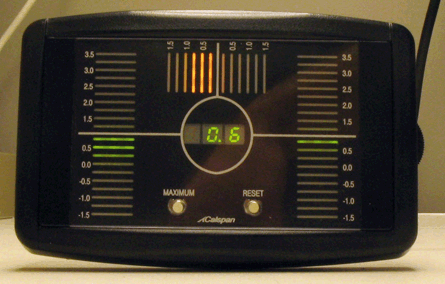While researching the differences between how pilots react to upset conditions in an actual aircraft versus a ground-based simulator, officials at Calspan had an "ah-hah!" moment. The data showed that pilots in the aircraft tended to react too timidly to upsets, prolonging or exacerbating the event, while those in the simulator tended to over-react, exposing the aircraft to potentially destructive g-loads or stalls.
James Priest, director of flight training for Calspan's flight research training centre, conceived an idea that later seemed an obvious solution - put a g-meter in the cockpit. The aid worked, helping pilots both in the aircraft and in the simulator to recover in a standardised fashion based on achieving a desired g-load (-0.5g for the nose-high recovery, for example) rather than reacting to the look or feel of the situation alone.
Next is development of a portable dual-axis load meter with graphical display that shows the individual loads on each wing as well as side loads on the vertical tail. Such a device, in the ground-based simulator, could help pilots to avoid breaching aircraft load limits or angle of attack or angle of sideslip envelopes for which the simulator motion systems are valid, says Priest.
 |
|---|
Calspan's g-meter will help pilots correlate their recovery performance to g-loads they put on the aircraft |
Source: Flight International























